Author: Marshall Schott
In addition to its beautiful cathedrals and advanced universities, the city of Köln, Germany has a rich beer history that’s hundreds of years in the making. At the beginning of the 17th century, a time when the rest of country was brewing cool fermented lagers, a law was established that banned the use of anything but top fermenting ale strains for beer produced in this region. While it’s unclear the reasons the government at the time felt such a law was necessary, we have them to thank for a style born out of this curious limitation.
Kölsch as an official style is actually quite young. In 1906, Köln’s Sünner Brewery began brewing a crisper, clearer counterpart to the more common Weissbier of the time, eventually giving it the Kölsch moniker in 1918. More than 40 breweries were producing versions of Kölsch by the start of World War II, after which only a couple remained. However, despite the overwhelming popularity of traditionally fermented pale lager, Kölsch breweries began popping up all over Köln, such as Früh and Gaffel.
One of the more interesting facts about Kölsch is that, per the Kölsch Konvention of 1986, it can only be brewed in Köln and must adhere to a certain set of standards agreed upon by the breweries who are members of the Konvention. It’s for this reason some American breweries use the term Kölsch-style for their versions of this deliciously crushable beer, which the BJCP describes as:
A clean, crisp, delicately-balanced beer usually with a very subtle fruit and hop character. Subdued maltiness throughout leads into a pleasantly well-attenuated and refreshing finish. Freshness makes a huge difference with this beer, as the delicate character can fade quickly with age. Brilliant clarity is characteristic.
As a long-time lover of this style, I was curious to see what would happen if I made one using methods that would likely cause P.J. to roll in his grave!
| BREWING THE BEER |
Relying on previous batches of tasty Kölsch I’d made in the past as inspiration, I plugged a recipe into BeerSmith the day before brewing.
Short & Shoddy Kölsch
Recipe Details
| Batch Size | Boil Time | IBU | SRM | Est. OG | Est. FG | ABV |
|---|---|---|---|---|---|---|
| 5.5 gal | 20 min | 22.2 IBUs | 4.9 SRM | 1.050 | 1.014 | 4.7 % |
| Actuals | 1.05 | 1.009 | 5.4 % | |||
Fermentables
| Name | Amount | % |
|---|---|---|
| Pelton Pilsner-style Malt (Mecca Grade) | 11 lbs | 89.8 |
| Metolius Munich-style Malt (Mecca Grade) | 1.25 lbs | 10.2 |
Hops
| Name | Amount | Time | Use | Form | Alpha % |
|---|---|---|---|---|---|
| Tettnang | 50 g | 20 min | First Wort | Pellet | 3.5 |
| Horizon | 8 g | 20 min | First Wort | Pellet | 14.1 |
Yeast
| Name | Lab | Attenuation | Temperature |
|---|---|---|---|
| Dieter (G03) | Imperial Yeast | 75% | 60°F - 69°F |
Notes
| Water Profile: Ca 91 | Mg 1 | Na 10 | SO4 150 | Cl 49 |
Download
| Download this recipe's BeerXML file |
I then immediately went out to my garage, opened a can of refreshing fizzy yellow, and began collecting the full volume of brewing liquor in my kettle.
I filtered the water out of habit, but I didn’t add anything to it to match a target profile. While the water was flowing, I weighed out and milled the grain directly into a Brew Bag fabric filter.
A lid wasn’t within arm’s reach, so I collapsed the top of the bag on the grain and left it that way.
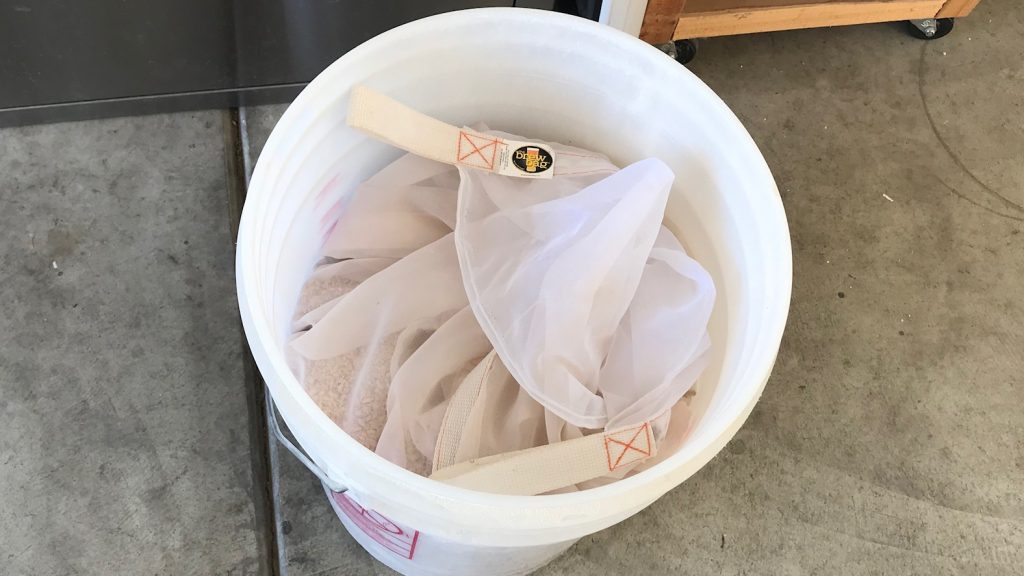
I finished my prep by placing a heat stick in the water and setting the timer to turn it on a couple hours before I planned to start the next day.

The strike water was a tad warmer than expected when I checked on it the next morning, but I mashed in anyway because I didn’t feel like waiting for it to cool off.
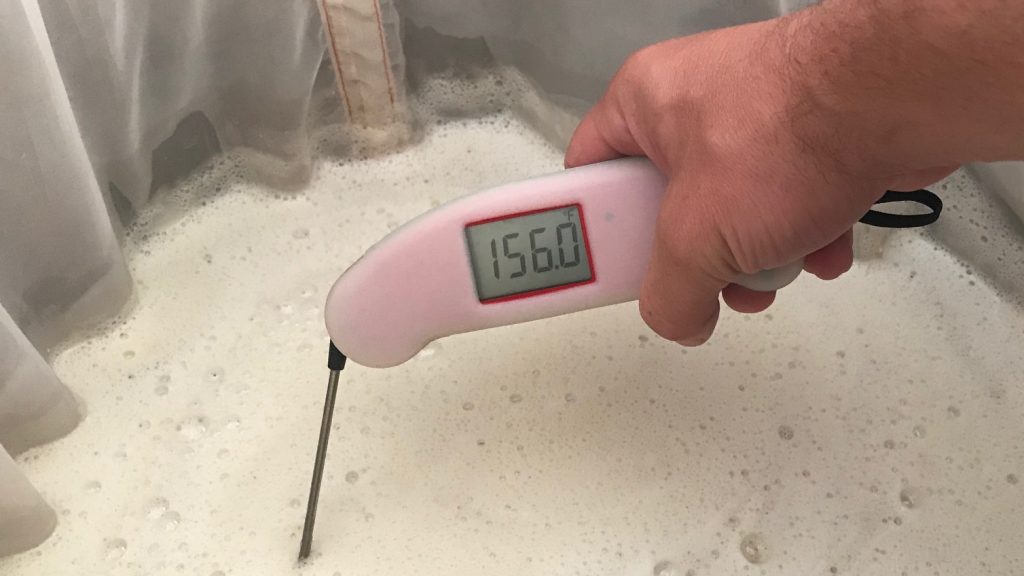
During the very short mash rest, I weighed out the single kettle hop addition. I contemplated tossing in some Tettnang but decided against it last minute, not wanting anything too traditional to cramp my shoddy style.
The mash was left uncovered and with no insulation for 20 minutes.
When my mash timer went off, I removed the bag full of spent grains from the wort, gave it a good squeeze, then added the single dose of hops while the was heating up. The wort was boiled for 20 minutes then immediately chilled to 74°F/23°C, which was slightly warmer than my groundwater temperature at the time.
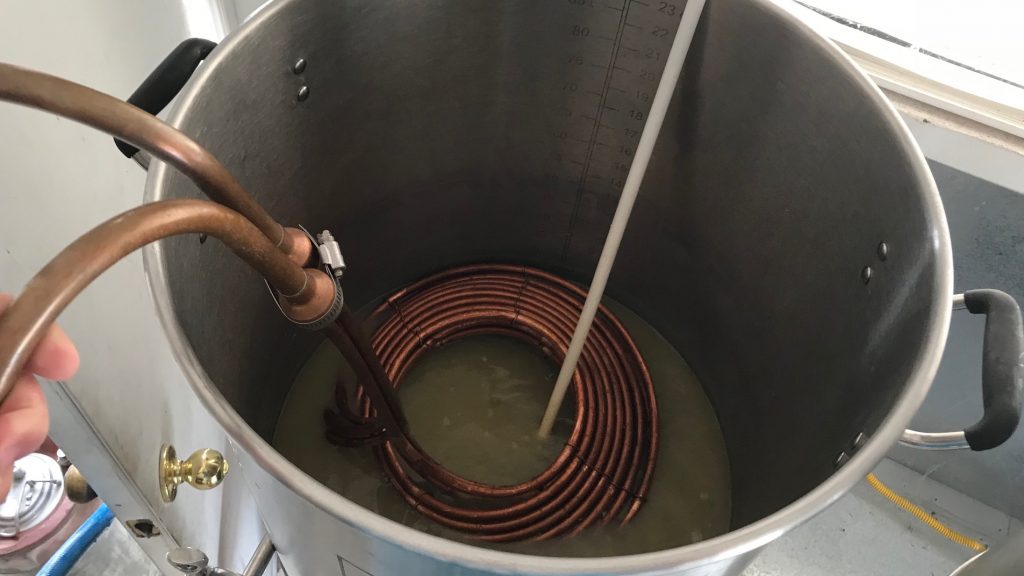
I transferred 5.5 gallons/21 liters of unsettled wort to a Speidel fermentor.
After placing the wort filled fermentation vessel in my chamber, I immediately pitched a pack of Imperial Yeast G03 Dieter— no starter, no waiting for the wort to chill.
A hydrometer measurement of some leftover wort revealed I’d hit a bit higher than my target OG based on a brewhouse efficiency of 50%; rather, this batch clocked in at 62% efficiency!
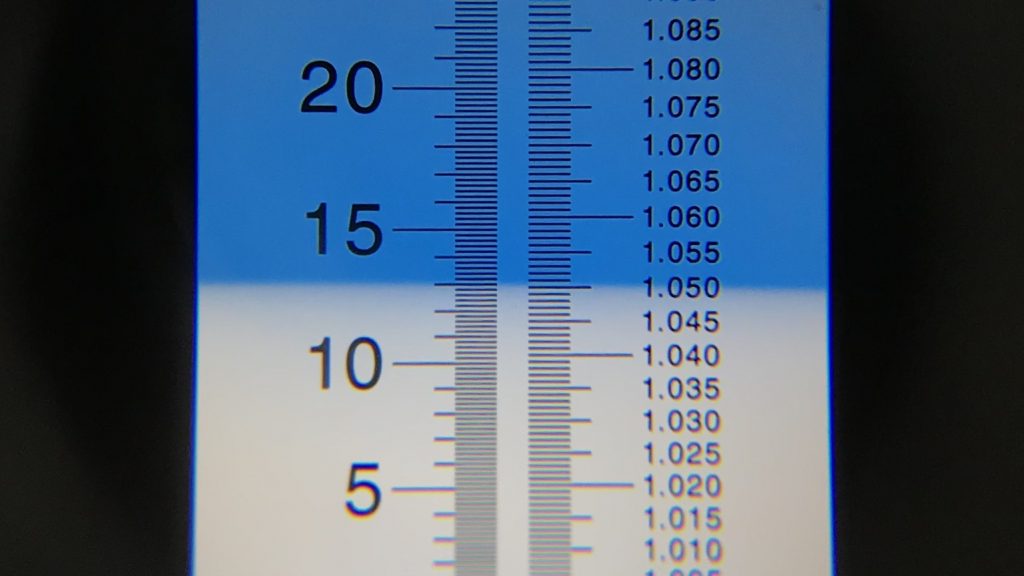
I left the beer in my 68°F/20°C chamber for a couple weeks while I went out of town for some stuff, eventually returning to find all activity absent. A hydrometer measurement at this time showed FG had been reached.
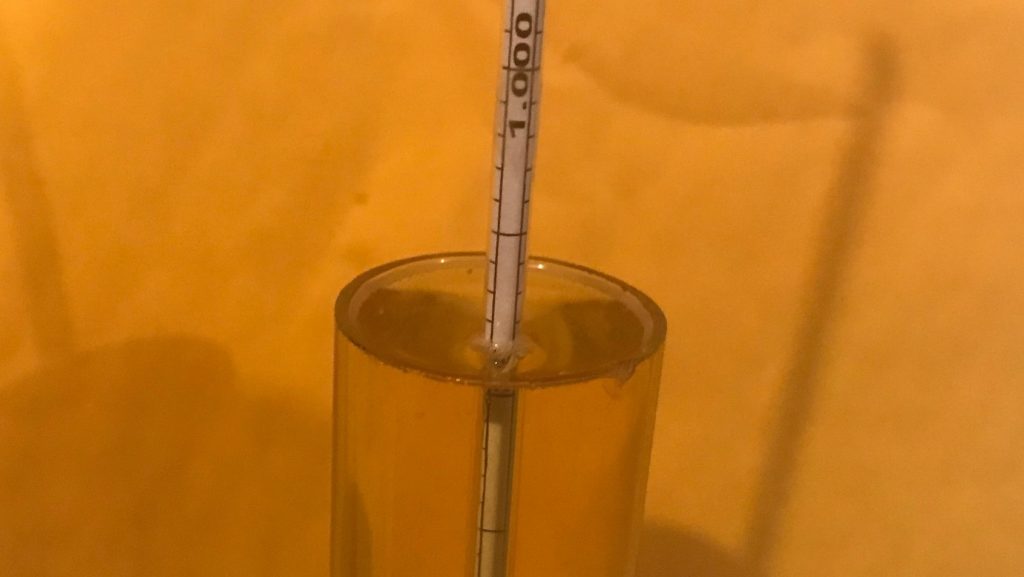
After swapping out the airlock for a shoddy CO2 filled BrüLoonLock, I cranked the temperature down to 32°F/0°C for a period of cold crashing.
After about 36 hours, I added gelatin to the cold beer in hopes of creating something pretty to look at.
After another few days, I transferred the cold beer to a keg.
The filled keg was placed in my keezer where it was burst carbonated and left to condition for 4 days before I served it to tasters.
| RESULTS |
A total of 19 people of various levels of experience participated in this Short & Shoddy evaluation. Participants were first asked to identify the style they believed the beer to be based on their perception.
Tasters were then instructed to rate how hoppy, malty, and dry they perceived the beer to be on a 0-5 scale where a rating of 0 indicated “not at all” and 5 indicated “extremely;” these ratings were then averaged.
Tasters were provided a list of common hop, malt, and yeast characteristics then instructed to select from each the one they perceived as being strongest in the beer.
Hop Characteristics
Malt Characteristics
Yeast Characteristics
Next, participants were asked to indicate whether or not they detected any off-flavors in the beer; those who did were provided a list of common off-flavors and instructed to select the one they perceived as being strongest. Only 1 participant reported perceiving an off-flavor, acetaldehyde, in the beer.
Tasters were then asked to rate how much they enjoyed the beer on a 0-5 scale where 0 indicated they hated it and 5 indicated they loved it.
Finally, the beer style was revealed to participants and they were asked to rate how representative it was on a 0-5 scale where 0 meant “not at all” and 5 meant “exactly.”
My Impressions: To put it simply, this shoddily brewed Kölsch had everything I expect and more, which I believe can be attributed in part to the use of Mecca Grade malts rather than more common continental malts. In addition to the bread crust notes and subtle graham cracker notes I expect in a Kölsch, I perceived a slightly sweet hay-like flavor that I felt added depth to the beer. The fermentation profile was very clean, which allowed the very pleasant floral hop characteristic to show through. I didn’t personally detect any noticeable esters, phenols, or off-flavors, just a crisp, easy-drinking, very enjoyable beer.
| CONCLUSION |
When I first learned about Kölsch, I thought of it as a sort of cheater’s lager due to the fact it relies on an ale yeast to produce a beer that’s very lager-like. I not only began brewing the style often, but using Kölsch yeast strains to ferment blasphemous versions of lager beers such as (m)Oktoberfest, which always fared well in competition. Despite some descriptions of Kölsch as possessing fruity characteristics due to the warmer fermentation temperature with ale yeast, I always perceived the versions I made as being crisp, clean, and lager-like. Of course, that was using fairly standard brewing methods.
Based on the short and shoddy approach I took to brew this particular Kölsch, one with a more traditional bent might have expected it to have myriad problems– low ABV and lacking malt character from the reduced mash length, cooked cabbage and canned corn from the abbreviated boil, and stylistically inappropriate esters from the high pitching temperature. But in the end, neither blind participants nor I detected any such issues, in fact, tasters not only thought the beer represented the Kölsch style well, but they seemed to enjoy it too.
In follow-up conversations with participants who’d finished the survey, all who were still unaware of the methods used to brew the beer, the most commonly commented on aspect of the beer was the malt character. One person reported perceiving a subtle vanilla aroma that he thought paired well with the more typical bread crust notes, while another taster was enamored with the “light sweet cookie flavor” she was picking up. My use of domestic craft malt for this Kölsch was arguably shoddy, seeing as I forwent the use of continental malts, but I agree with the tasters’ assessment– it really worked out!
If you have thoughts about this Short & Shoddy brew, please feel free to share in the comments section below!
Support Brülosophy In Style!
All designs are available in various colors and sizes on Amazon!
Follow Brülosophy on:
FACEBOOK | TWITTER | INSTAGRAM
If you enjoy this stuff and feel compelled to support Brulosophy.com, please check out the Support page for details on how you can very easily do so. Thanks!


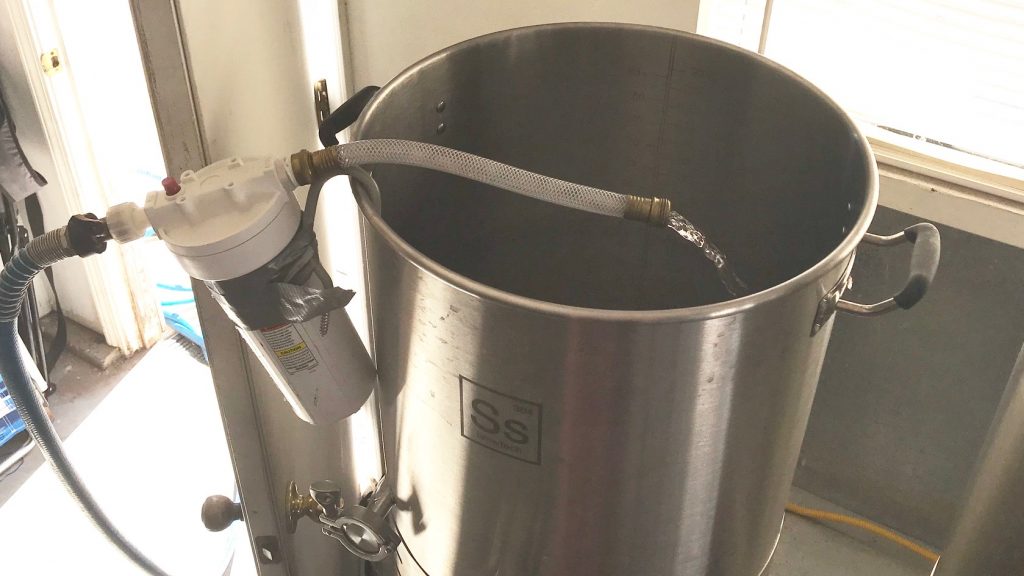

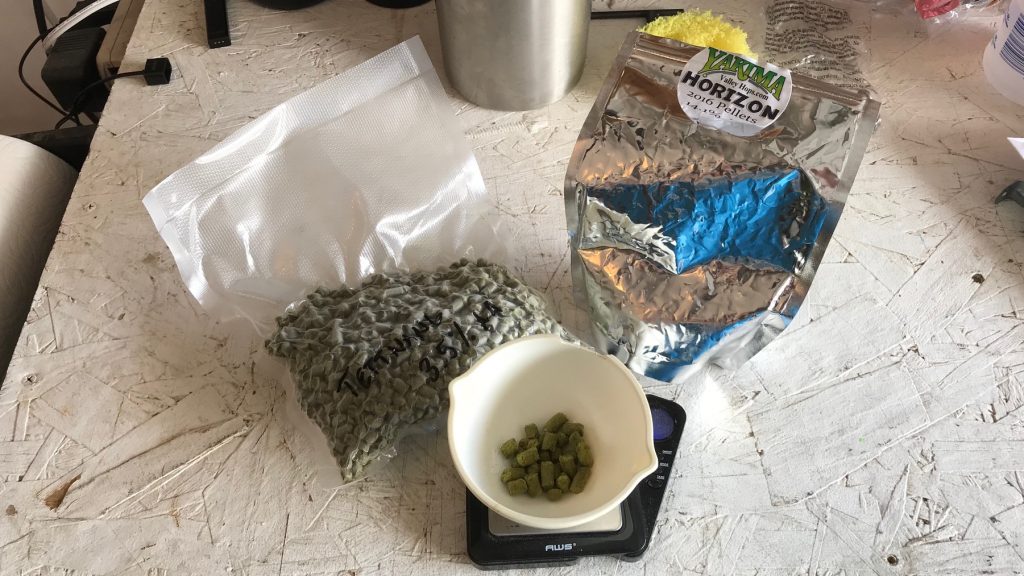
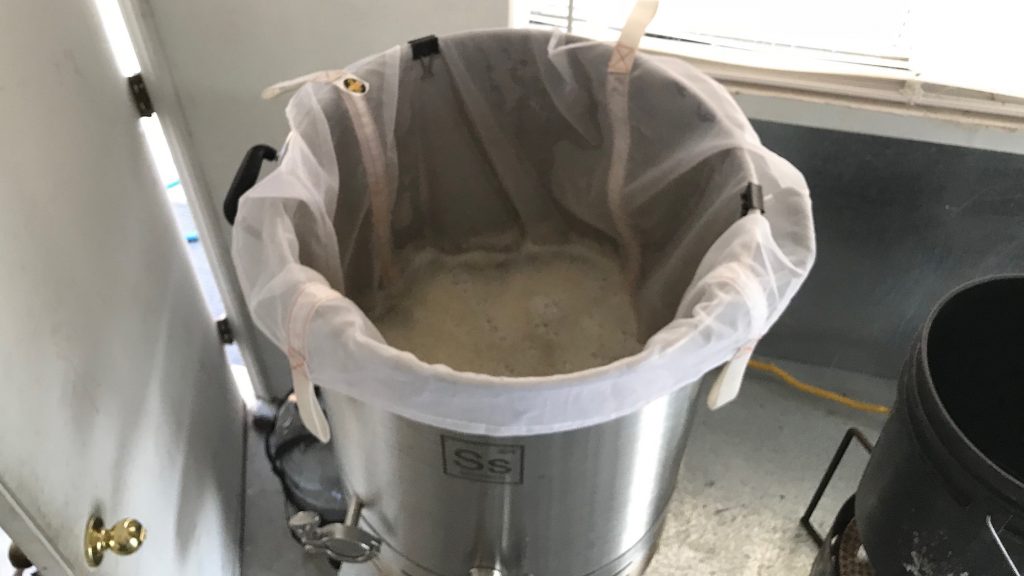
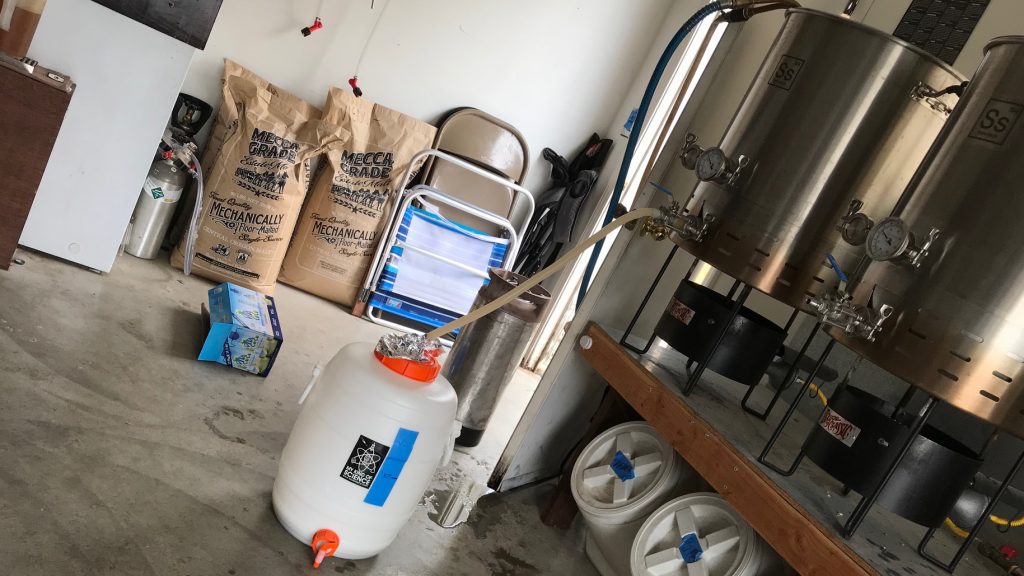
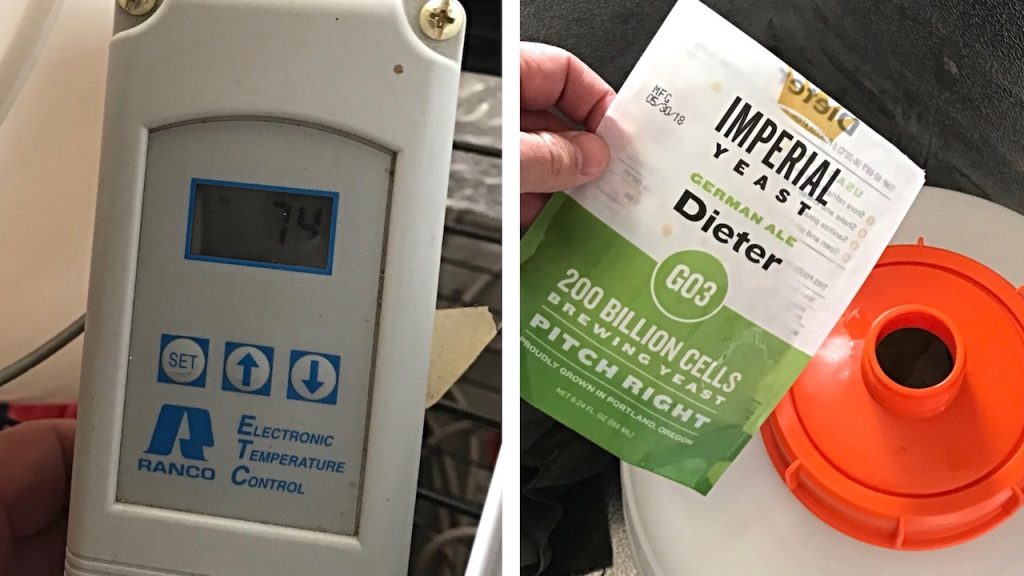
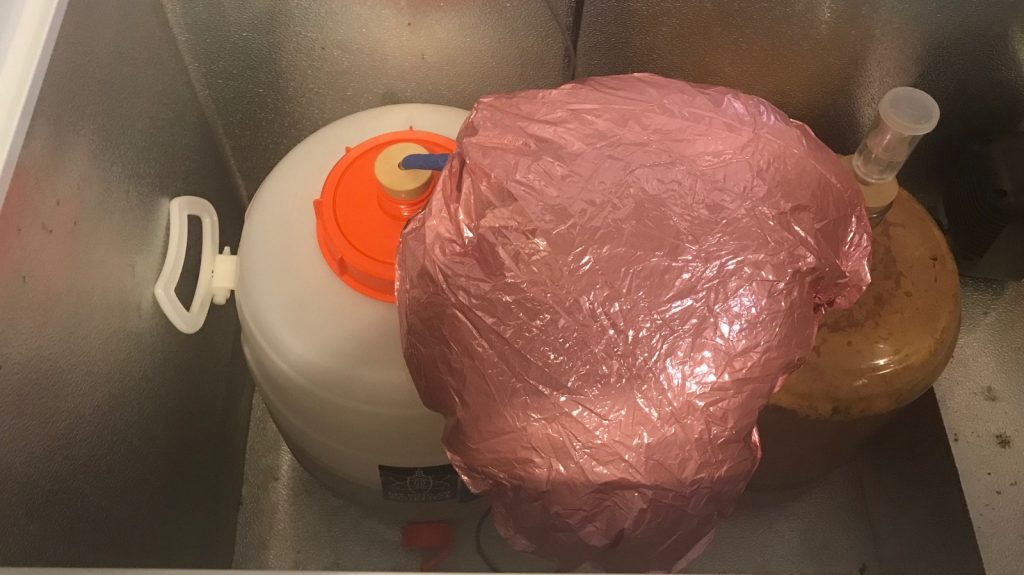
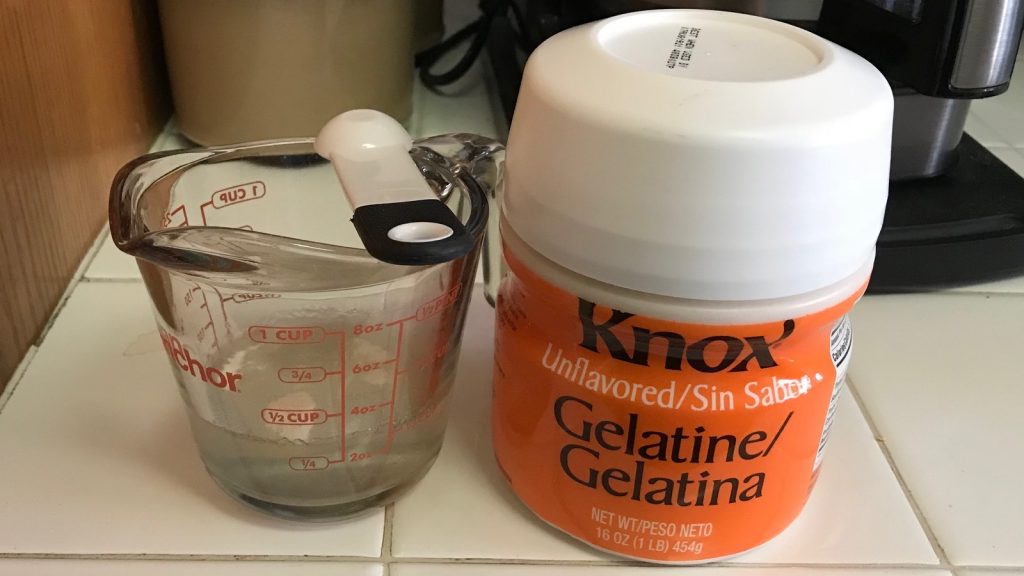
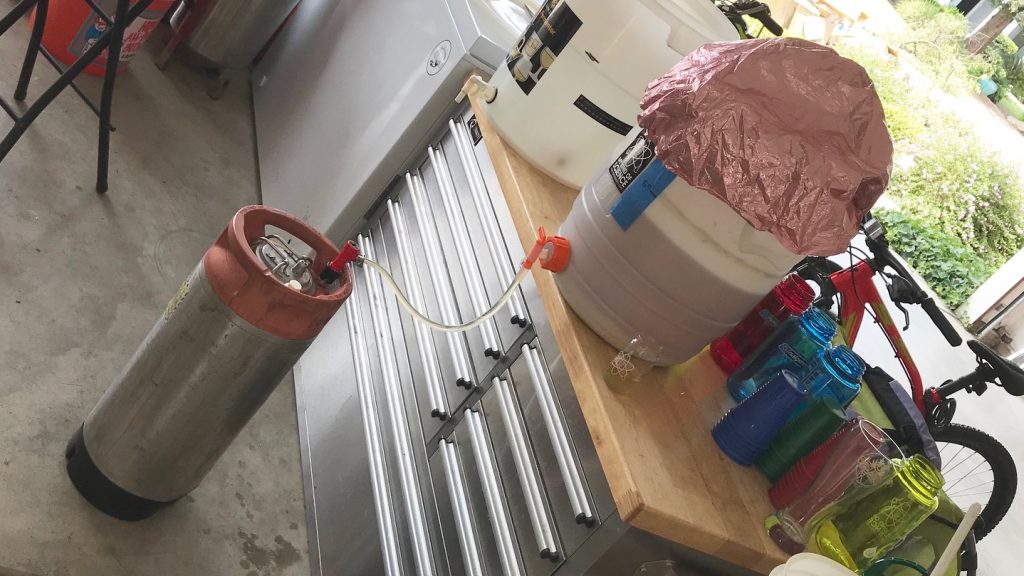
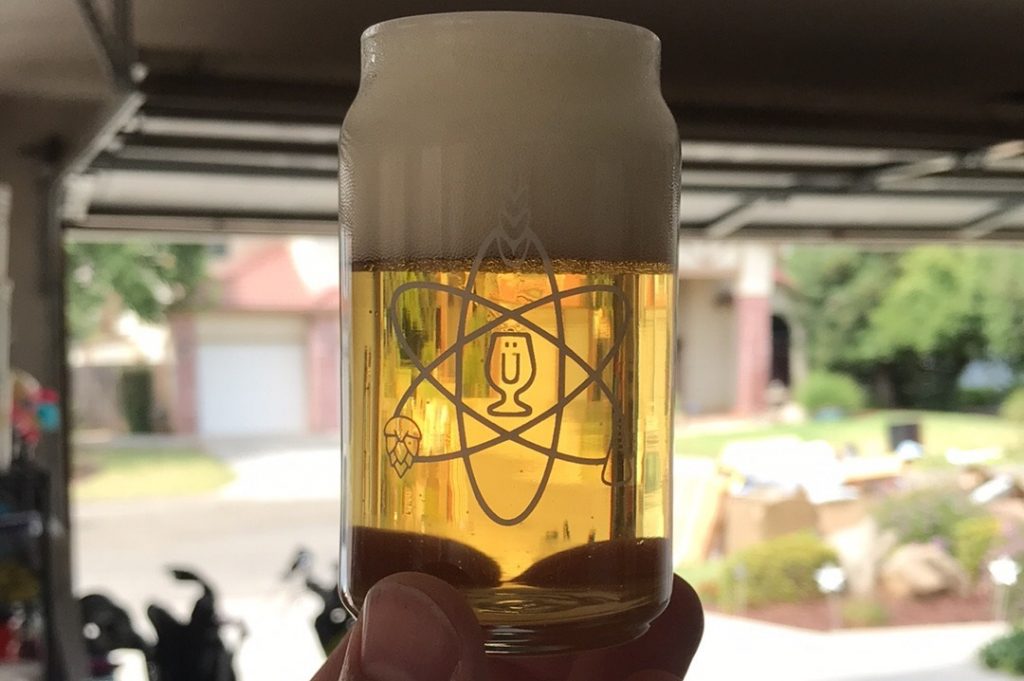
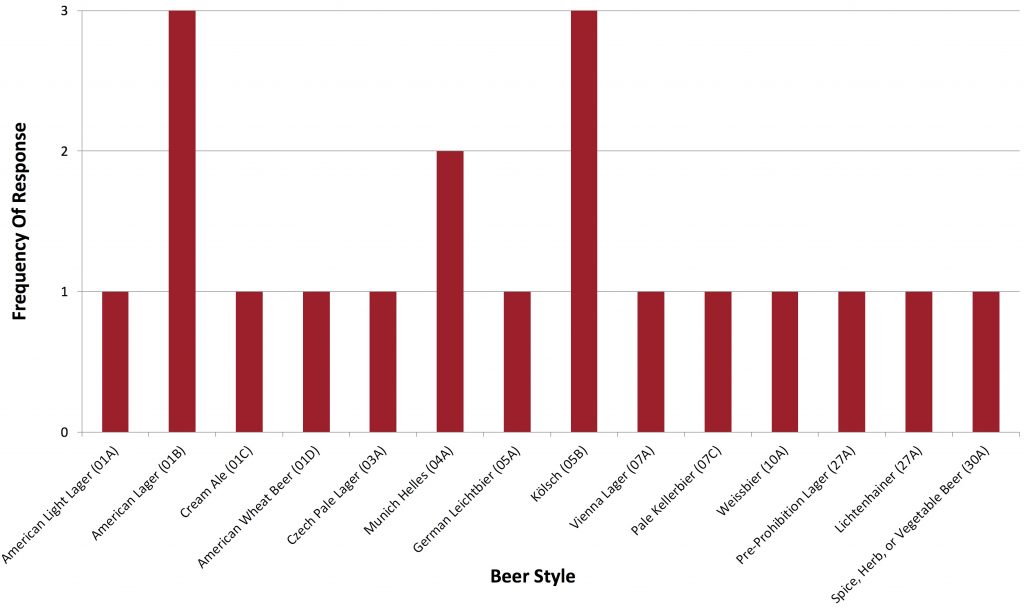
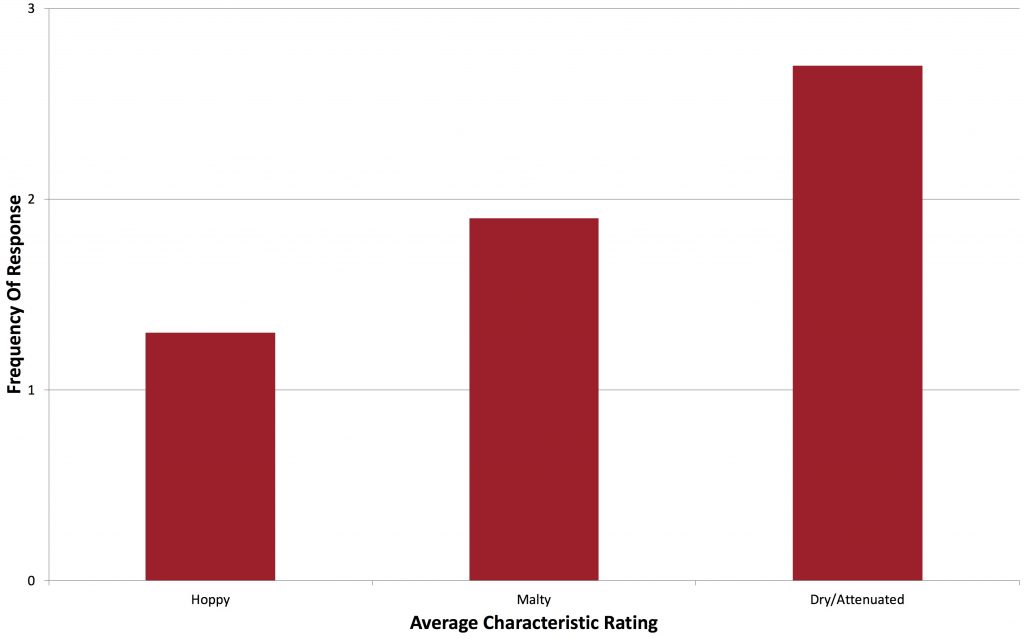
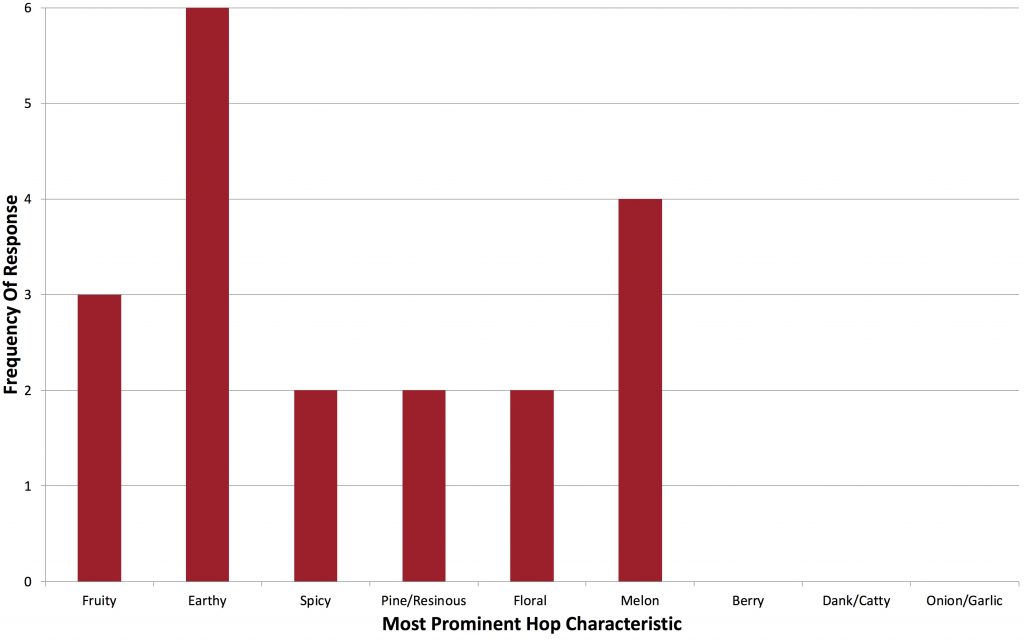
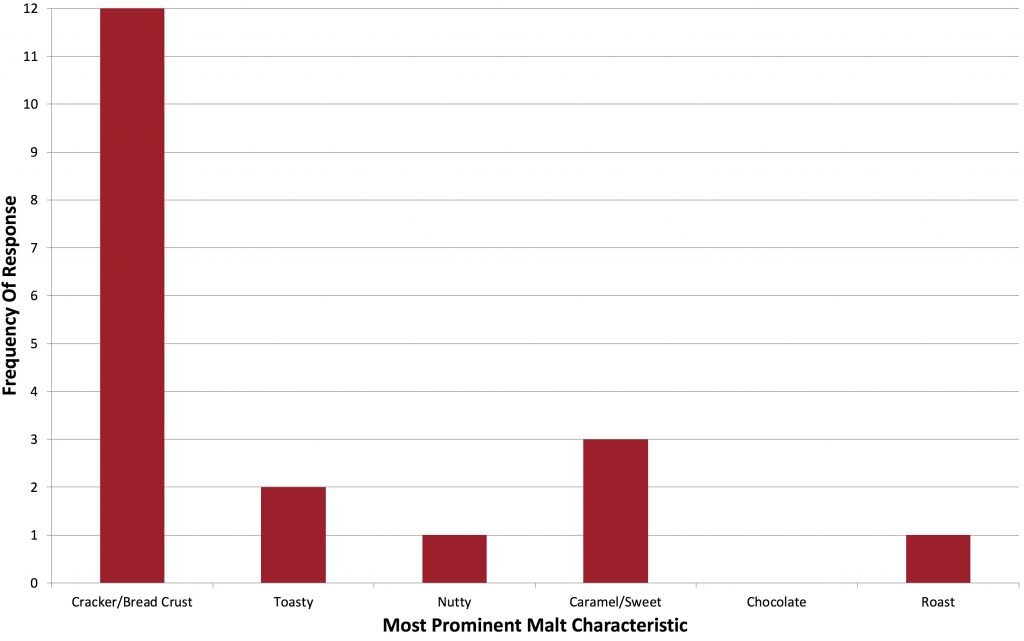
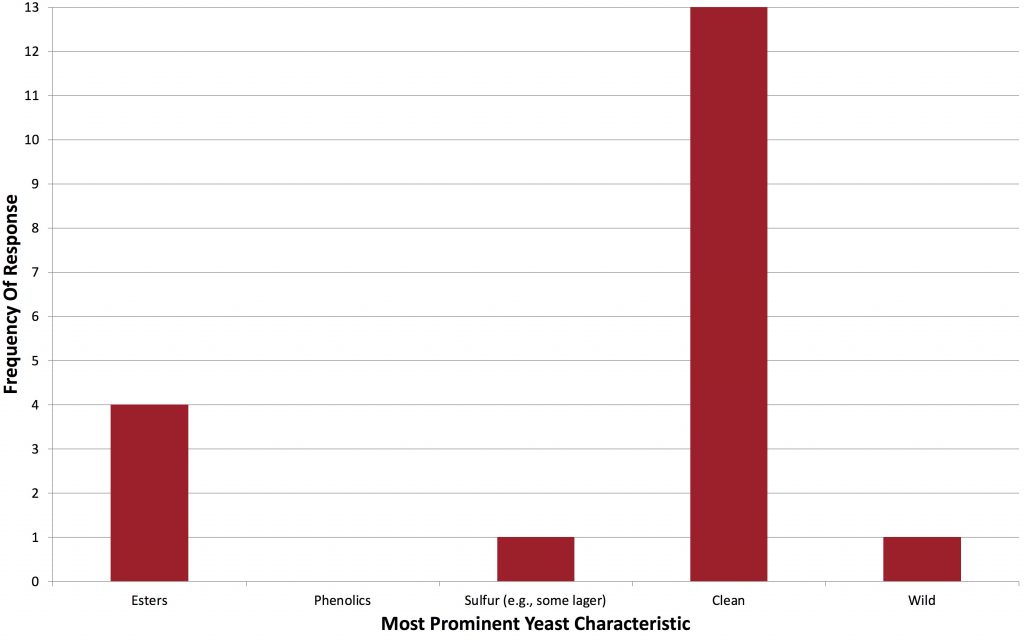
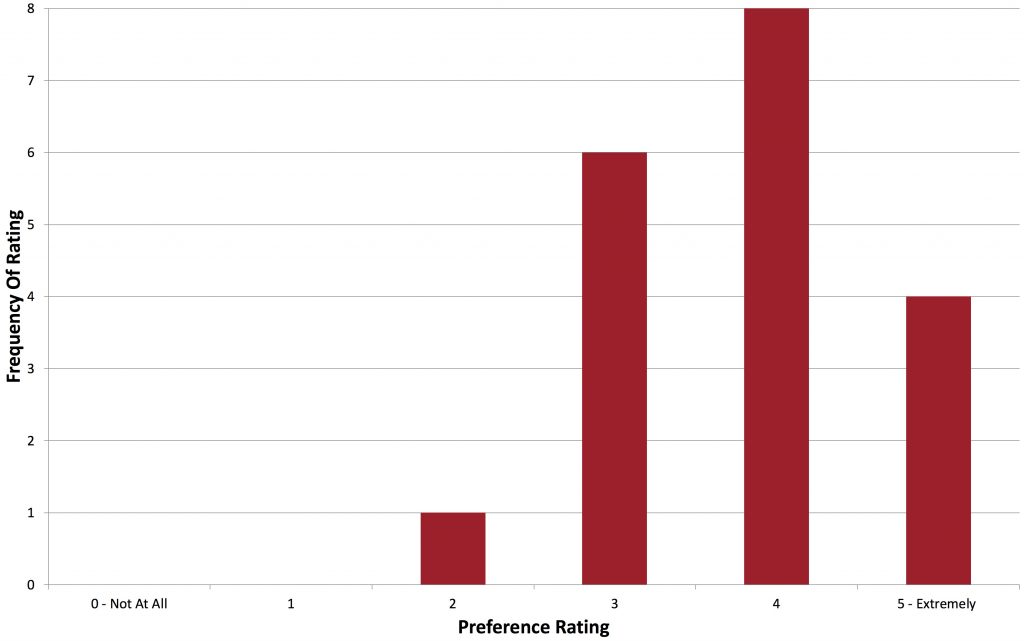
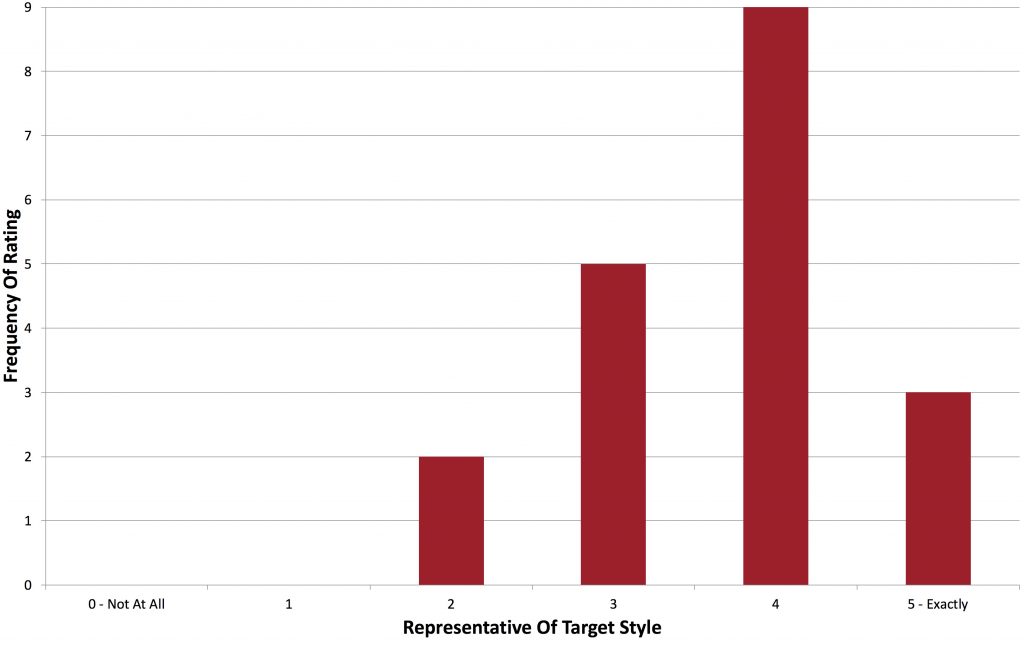










11 thoughts on “Short & Shoddy | Kölsch”
Very interesting that even though you hit a higher mash temp your FG was still under your predicted. Looking back over the last 5-6 S&S brew sessions it appears you are usually hitting lower FG’s. I wonder if the abbreviated mash extracts more of the highly fermentable sugars and/or less of the less fermentable ones. Thanks for sharing!
Recently I made a similar Batch. Simple Grain Bill like yours, but used Hallertua for bittering (first wort) and Hallertua Blanc and Lemon Drop as Flavor aroma. 40 Minute Mash and 30 minute vigerous boil. Grain to glass was 10 days. Took it to a party and left with an empty keg. I am really enjoying the beers from these “short and shoddy” brew days! Keep the info coming!!
Cheers!
I’ve been wanting to try Mecca Grade malts for a while, but there’s no homebrew shop in my area (Sacramento) that carries it. If I order from their website, ground shipping for two bags of malt is $70, which effectively makes each bag cost ~$100. Too much to swallow for me. It’s too bad because I feel like I’m missing out on some great malts!
If you can stomach ordering from them, looks like Northern Brewer is carrying at least some of the mecca malts now.
RC, Try F.H. Steinbart in Portland. You can order Mecca malts by pound or ounce. They are pretty quick with shipping as I am on the East Coast and get the grain within a week.
It’s like your in my garage stealing my brewing techniques! I am not too sure I like your description of short and shoddy for my Standard Operating Procedures (SOP) ;). One difference you must have not caught with your secret cameras, I just put a lid on my carboy when I cold crash though. That balloon thingy seems pretty unshort & only a little shoddy IMO. Everything looks great! Cheers!
i would love to see a comparison between a short and shoddy method for a recipe versus the “correct” method. For example each could use the same malt bill and hop amounts – just used with traditional timings and attention to detail.
I like that idea too!
The recipe calls for Tettnang, but the description says that it was omitted. Which did you do?
Thanks for all the detail on your recipes marshal. I just brewed this one up tonight. Hit 1.052 Og excited to see how it turns out!
What hops and how much were used ?